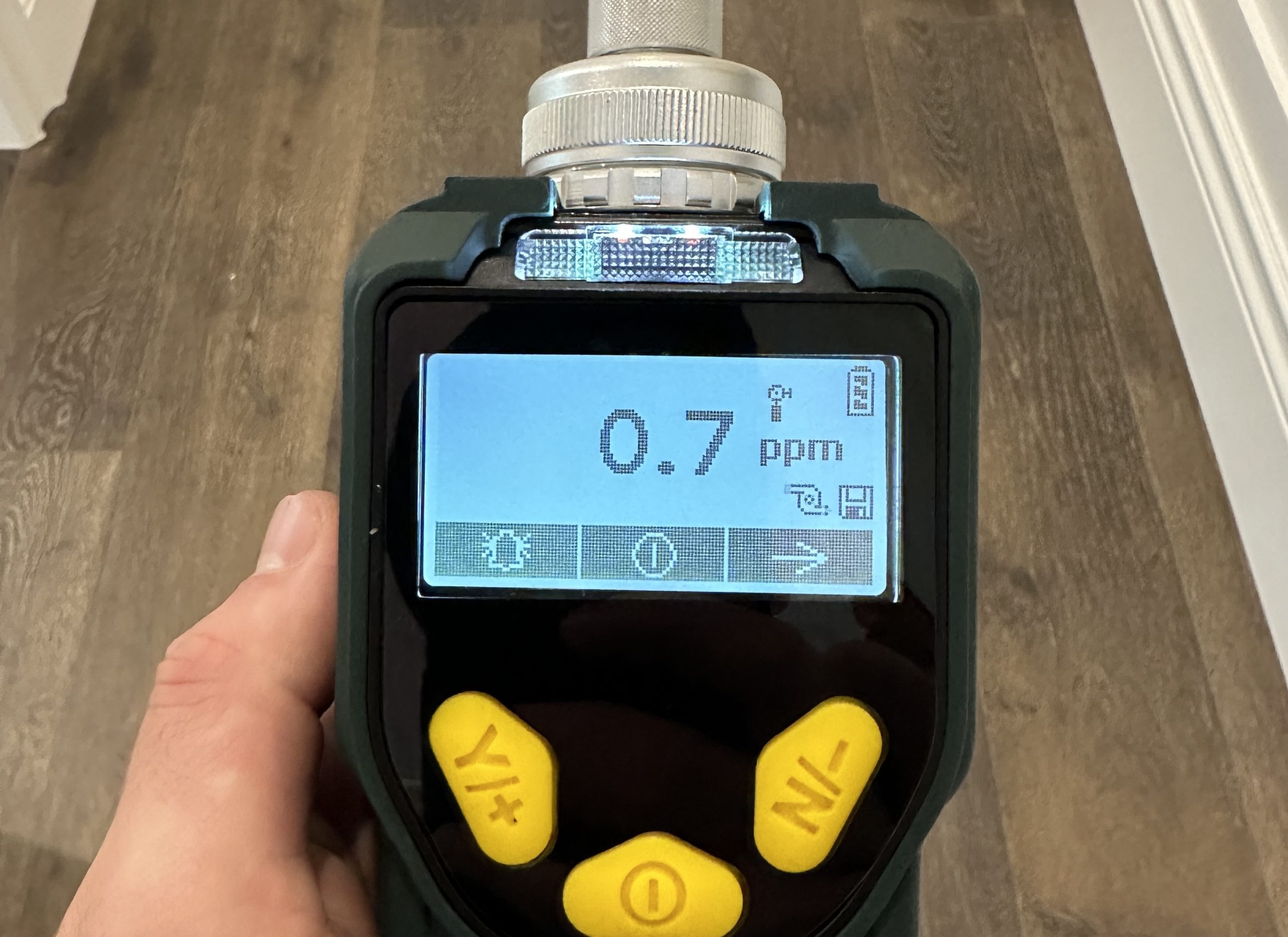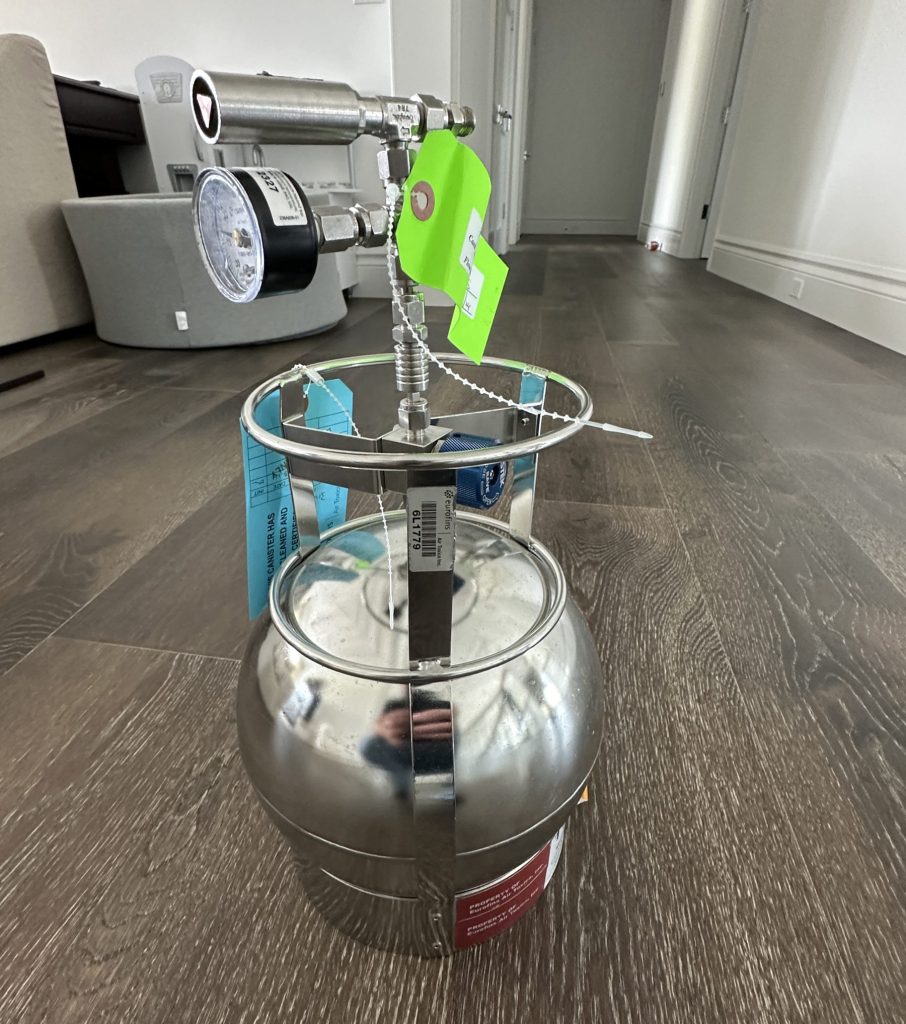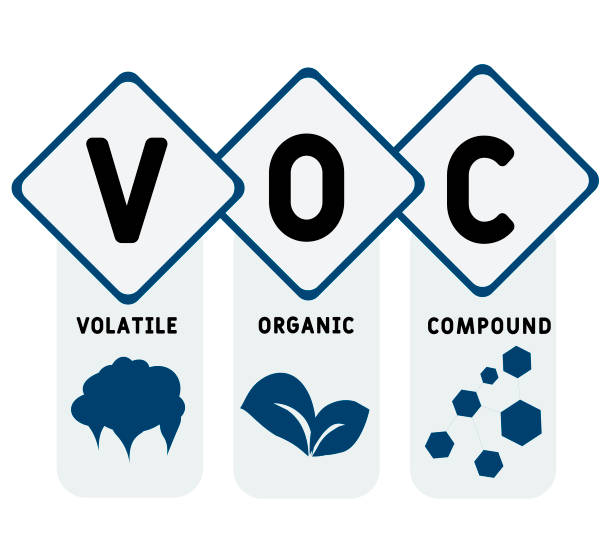Ever wonder why that new carpet has a distinct smell, or why your eyes water after fresh paint dries? These could be signs of Volatile Organic Compounds (VOCs) in your indoor environment. VOCs are a large group of organic chemicals that easily evaporate at room temperature. They can originate from a variety of common products we use in our homes and workplaces.
What are VOCs and Where Do They Come From?
VOCs encompass a wide range of chemicals, including benzene, formaldehyde, and toluene. These chemicals are found in cleaning products, air fresheners, and building materials, and even furniture.
While VOCs often have a noticeable odor, some are odorless. Thus, making it challenging to identify their presence without proper testing and equipment.
Health Risks Associated with VOCs
Exposure to VOCs can have a range of health effects and it is important to know what are considered dangerous levels. OSHA, provides an extensive chart that lists all VOCs specifying their permissible exposure limits (PEL).
PELs can vary depending on the specific VOC, its concentration (ppm), and the duration of exposure (usually an 8 or sometimes 10 hour period). Short-term effects can include headaches, dizziness, eye irritation, and nausea. Furthermore, long-term exposure can lead to more serious health problems, including respiratory issues, certain cancers, and damage to central nervous system.
Tips for Managing Healthy Indoor Air Quality

Since VOCs are prevalent in our everyday lives, it’s important to manage and prevent increased levels indoors to ensure healthy air quality. Here are some tips:
-
Increase Ventilation: Opening windows and doors regularly can allow fresh air to circulate and dilute VOC concentrations. More ideally, improving HVAC ventilation will increase supply of filtered fresh air, ensuring no VOCs from outside the building are intruding as well.
-
Choose Low-VOC Products: Look conscientiously for paints, cleaning products, and building materials that utilize natural products or even labeled “low-VOC” or “VOC-free.”
-
Control Humidity: Many research articles suggest that higher temperature and humidity levels can facilitate the off-gassing of VOCs indoors. Investing in a dehumidifier can be a great option to maintain optimal humidity levels.
-
Source Removal: With professional expertise and the right equipment, it may be possible to determine the origin of the VOCs in a building. If so, an IAQ protocol can be developed and allow you to tackle the issue directly at the source.
Importance of VOC Detection and Professional Testing
While some VOCs have a noticeable odor, many don’t. For a comprehensive understanding of your indoor air quality, professional VOC testing is highly recommended. The Environmental Protection Agency (EPA) has established Method TO-15 as the gold standard that we follow for VOC analysis in indoor air.
What is EPA TO-15?

The EPA TO-15 method is a meticulous process for identifying and quantifying VOCs in air samples. Here is an oversimplified breakdown:
-
Air is drawn through a specialized canister using negative pressure at a specific flow rate that traps VOCs.
-
The canister is sent to a laboratory for analysis.
-
In the lab, the VOCs are transferred from the canister to a solid multisorbent concentrator to be sampled.
-
Advanced techniques like gas chromatography and mass spectrometry are used to identify and measure the specific VOCs present.
Benefits of Professional VOC Testing
-
Peace of Mind: Knowing the specific VOCs and their concentrations in your environment allows you to take targeted action to improve air quality.
-
Improved Health: Identifying and addressing VOC concerns can significantly reduce potential health risks associated with chronic exposure. Some include cancer, liver, kidney, and central nervous system damage.
-
Enhanced Productivity: Studies show improved cognitive function and productivity in workspaces with good air quality. The U.S Army research findings have suggested that IAQ related health problems are costing an estimated $15 billion a year in direct medical costs and lost workdays.
The Power of VOC Reduction
Numerous studies demonstrate the dramatic improvement in indoor environments after VOC mitigation strategies. For the more mild cases, we as IAQ specialists recommend utilizing ozone technology. This can be either used as a means to remove existing VOCs inside or as a preventative action. According to a 2022 research experiment “Degradation of gaseous (VOCs) by a novel UV-ozone technology”, the usage of ozone (O3) expressed up to 98.5% removal efficiencies of select VOCs.
-
VOC Removal: With a professional knowledgeable in maintaining safe levels of ozone, ozone generators can be employed into a building as a means to reduce TVOCs and odors.
-
VOC Prevention: A UV bulb (specifically UVV) emits a very low concentration of ozone into the HVAC system, actively purifying the air inside a building.
Taking Action for a Healthier Indoor Environment
By understanding VOCs, their potential health risks, and the importance of detection methods like EPA TO-15, you can take proactive steps to ensure a safe and healthy environment in your home or workplace. Consider professional testing services from qualified providers to identify and address any VOC concerns effectively.

